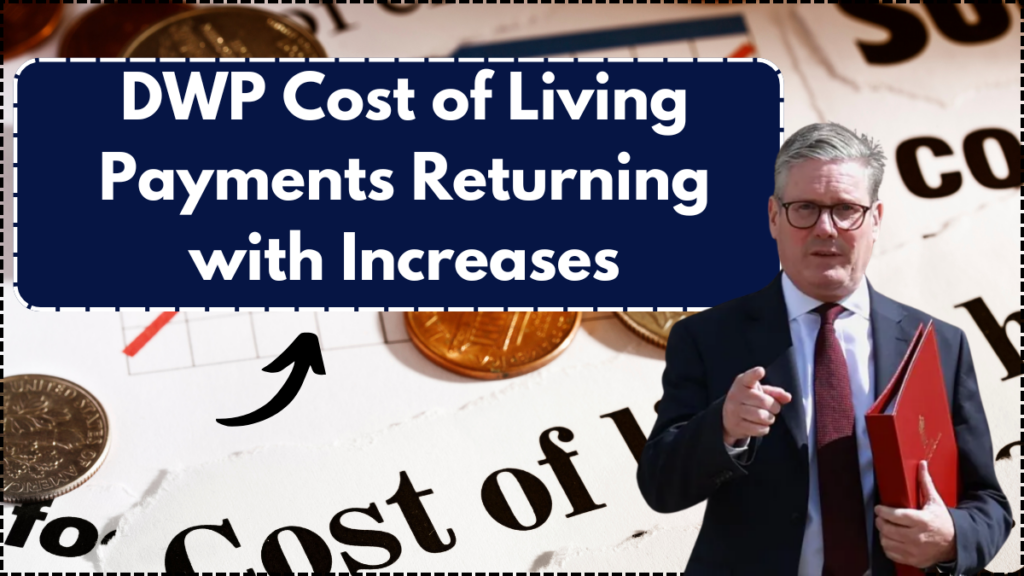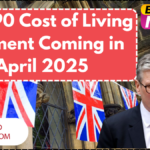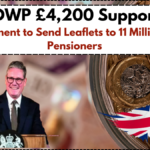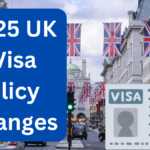In April 2025, the UK continues to experience financial pressure as inflation affects essential goods and services. The government, through the Department for Work and Pensions (DWP), has reinstated and adjusted the Cost of Living Payments to support struggling individuals and households. These payments serve as direct financial relief aimed at covering everyday costs, including housing, energy, and food.

What Are DWP Cost of Living Payments?
Initially introduced in 2022, the Cost of Living Payments were a response to the surging cost of energy and food. As of 2025, this support has evolved with updated eligibility criteria and increased accessibility. The program now provides additional support for vulnerable individuals and adjusts income thresholds to prevent minor pay increases from disqualifying recipients.
Key Details for 2025
| Topic | Details |
|---|---|
| Eligibility | Universal Credit, Pension Credit, Housing Benefit, Income Support, ESA, JSA, Tax Credits |
| Payment Amounts | Ranges from £301 to £500 based on individual circumstances |
| Payment Schedule | Three installments throughout 2025 (Spring, Summer, Autumn) |
| Key Changes | Updated income thresholds, automatic payments, bonus for vulnerable groups |
| Administered By | Department for Work and Pensions (DWP) |
Why Cost of Living Payments Are Essential in 2025
Many UK families face growing economic challenges:
- Energy Costs: Prices remain elevated, with average monthly bills over double what they were in 2021.
- Grocery Inflation: Essentials such as milk, bread, and vegetables have seen price hikes of up to 20%.
- Stagnant Wages: While some wages have increased slightly, they have not kept up with the cost of living.
These realities make government support crucial for millions who risk falling behind financially.
Who Is Eligible in 2025?
To receive the 2025 Cost of Living Payments, individuals must receive at least one of the following benefits:
- Universal Credit
- Pension Credit
- Income Support
- Income-based Jobseeker’s Allowance (JSA)
- Income-related Employment and Support Allowance (ESA)
- Child Tax Credit (if not also on Universal Credit)
- Working Tax Credit (if not also on Universal Credit)
- Housing Benefit
What’s New in the 2025 Program?
Adjusted Income Thresholds
The income cap has been raised to allow recipients with slight wage increases to remain eligible. This change prevents people from losing essential aid due to marginal income growth.
Additional Payments for Vulnerable Groups
Carers, people with disabilities, and households with high energy usage may receive extra payments of up to £500. These bonuses aim to account for the disproportionate burden these groups face.
Seamless, Automatic Payments
Eligible recipients don’t need to apply. Payments are sent automatically to the bank account tied to their benefit claims, streamlining the process.
Payment Breakdown and Schedule
Standard Payments
Most eligible individuals will receive a base payment of £301.
Bonus Support
Those qualifying as vulnerable may receive extra funds, potentially increasing the total support to £500.
Payment Timeline for 2025
| Installment | Period |
| First Payment | Spring 2025 |
| Second Payment | Summer 2025 |
| Third Payment | Autumn 2025 |
Payments are expected to be directly deposited across three phases, minimizing processing delays.
If You’re Not Eligible: Other Options
If you don’t qualify for the main Cost of Living Payments, alternative support schemes include:
- Local Welfare Assistance: Councils offer emergency grants for heating, food, and other critical needs.
- Energy Rebates: Programs such as the Warm Home Discount provide a £150 credit on energy bills.
- Debt Relief Services: Organizations like Citizens Advice and StepChange offer free, confidential help for managing finances.
Real-World Example: James’s Experience
James, a 72-year-old retiree receiving Pension Credit, saw his energy bills surge during the winter. In Spring 2025, he received a £301 payment, followed by an additional £150 due to his vulnerable status. This financial boost allowed him to stay warm and stocked on essentials without needing to borrow or cut corners.
How to Maximize Your Payment
- Focus on Essentials: Prioritize rent, utility bills, and groceries.
- Set Aside a Portion: Reserve part of your payment for emergencies.
- Look for Discounts: Many retailers and service providers offer reduced prices for low-income households.
- Track Your Spending: Budgeting tools can help stretch each pound further.
Conclusion
The UK government’s Cost of Living Payments remain a crucial part of its social support system in 2025. With higher costs affecting basic living standards, this initiative ensures that the most vulnerable continue to receive timely help. Understanding your eligibility, staying informed about payment schedules, and planning your spending can make a real difference during financially uncertain times.
FAQs
Who gets the DWP Cost of Living Payments in 2025?
If you’re receiving benefits like Universal Credit, Pension Credit, or Tax Credits, you’ll likely qualify.
How much will I receive?
Standard payments are £301, with vulnerable individuals eligible for up to £500 total.
Do I need to apply for the payment?
No application is needed. Payments are automatic for those already on qualifying benefits.
When are the payments sent?
There will be three installments in Spring, Summer, and Autumn 2025.
What if my income changed slightly this year?
You may still be eligible. Adjusted thresholds in 2025 ensure small increases won’t disqualify you.
Can people on Housing Benefit get it?
Yes, especially if they don’t already receive Universal Credit or Tax Credits.
What should I do if I don’t get the payment but think I should?
Contact DWP or check your benefit status to ensure your details are up to date.
Are pensioners automatically included?
Yes, Pension Credit recipients are included in the automatic payment system.
Can I receive more than one payment?
Yes, payments are made in three parts over the year.
Will this support continue in 2026?
While not confirmed, continued support will likely depend on economic conditions and government policy next year.
For More Information Click Here
Pari is a passionate writer known for captivating stories that blend imagination and reality. Inspired by travel, history, and everyday moments, Pari crafts narratives that resonate deeply with readers.




